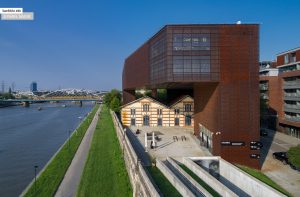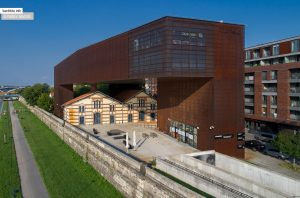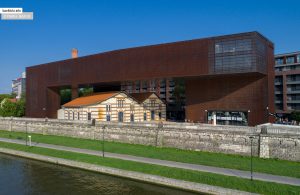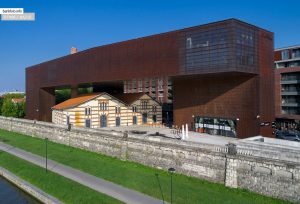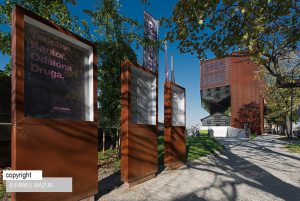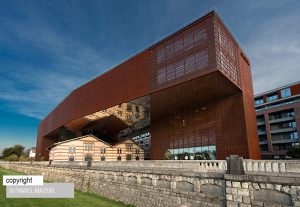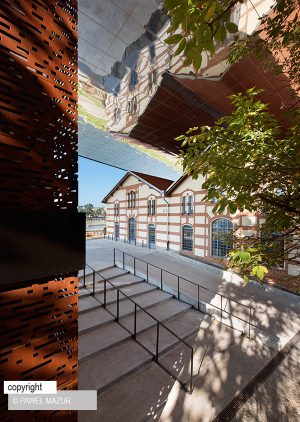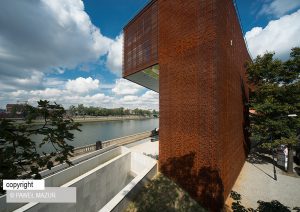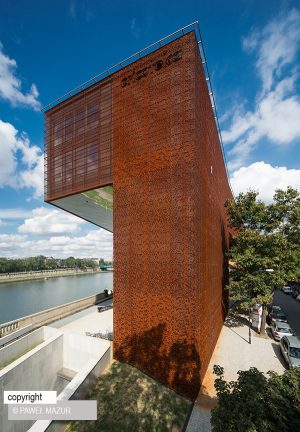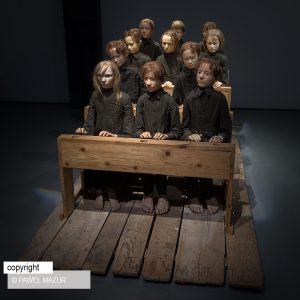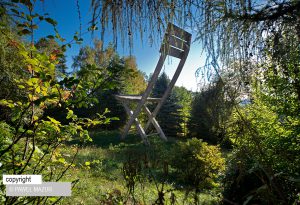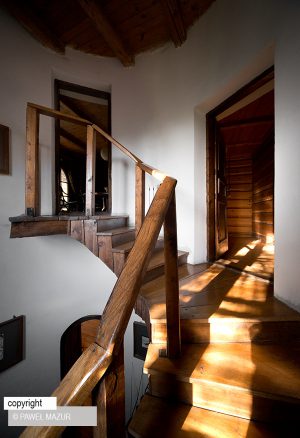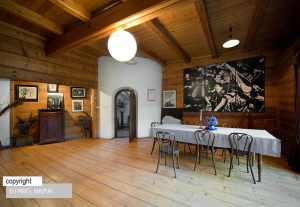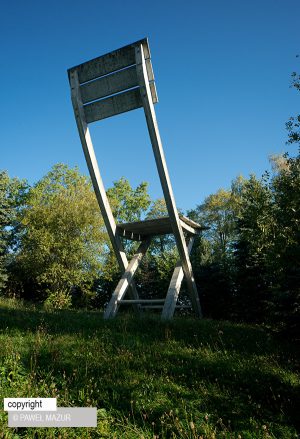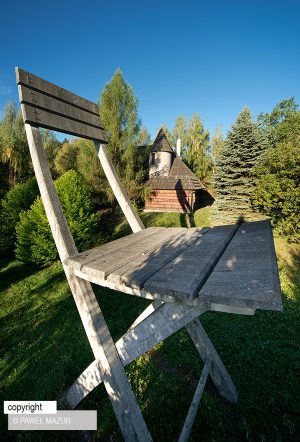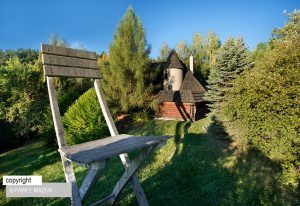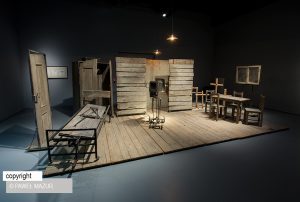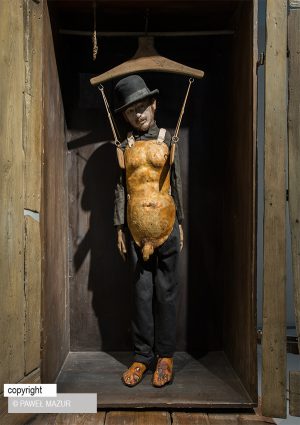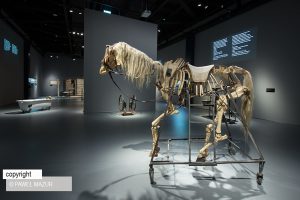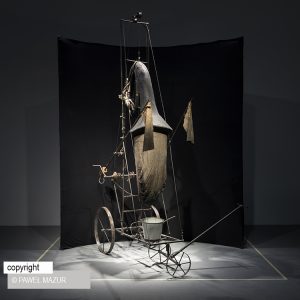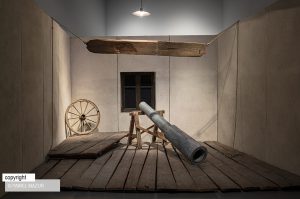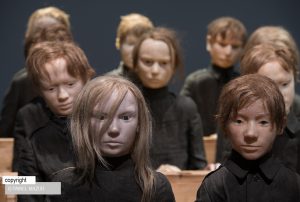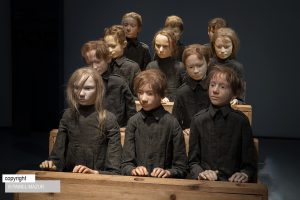
TADEUSZ KANTOR. Reżyser teatralny, malarz i scenograf związany z Krakowem. Twórca awangardowego teatru Cricot 2, uważany za jednego z największych powojennych artystów teatralnych Europy. Interesował się również architekturą. Wymyślił „niemożliwą architekturę”, której realizacjami miały być m.in. most na Wiśle pod Wawelem w kształcie wieszaka na ubrania oraz wielkie i kilkunastometrowe krzesła rozstawione na krakowskim rynku. Nic z tego nie wyszło. Jednak na przełomie 1989 i 1990 roku wybudował w Hucisku k. Wieliczki dom w stylu eklektycznym, łączący cechy stylu zakopiańskiego i średniowiecznej warowni. Przed domem, 5 lat po jego śmierci, powstała rzeźba według jego projektu – 14 metrowe, betonowe „Krzesło”. Podobne, ale nie identyczne – stoi od 2008 roku we Wrocławiu przy ul. Rzeźniczej.
TADEUSZ KANTOR. Theater director, painter and set designer associated with Krakow. Creator of the avant-garde Cricot 2 theater, considered one of the greatest post-war theater artists in Europe. He was also interested in architecture. He invented „impossible architecture”, the implementation of which was to include, among others: a bridge on the Vistula near Wawel in the shape of a clothes hanger and large chairs several meters high placed on the Krakow market square. Nothing came of it. However, at the turn of 1989 and 1990, he built an eclectic-style house in Hucisko near Wieliczka, combining the features of the Zakopane style and a medieval stronghold. In front of the house, 5 years after his death, a sculpture was created according to his design – a 14-meter-high concrete „Chair”. Similar, but not identical – it has been standing in Wrocław since 2008 at ul. Rzeźnicza.

